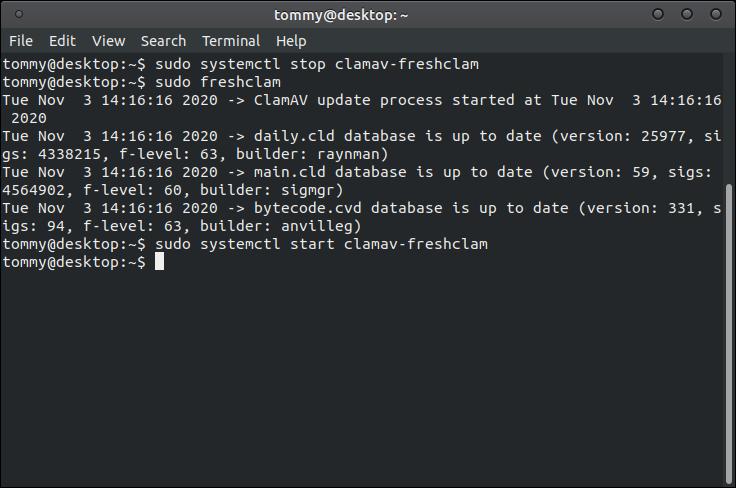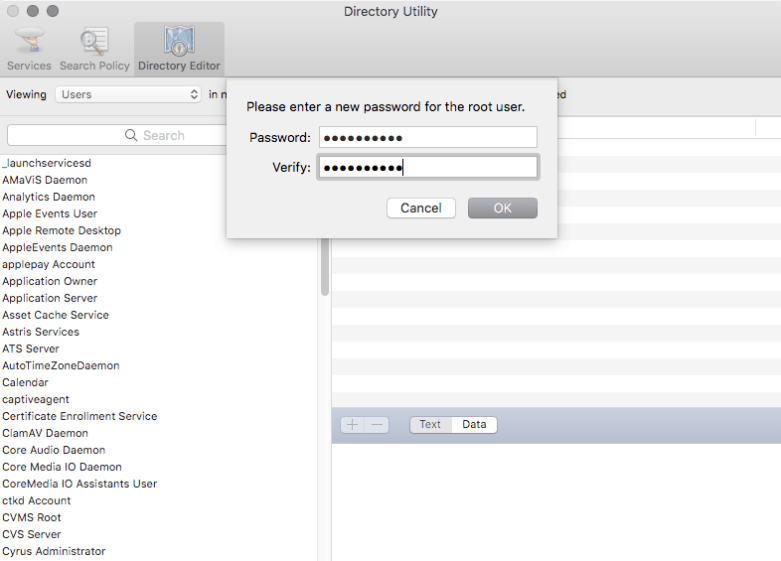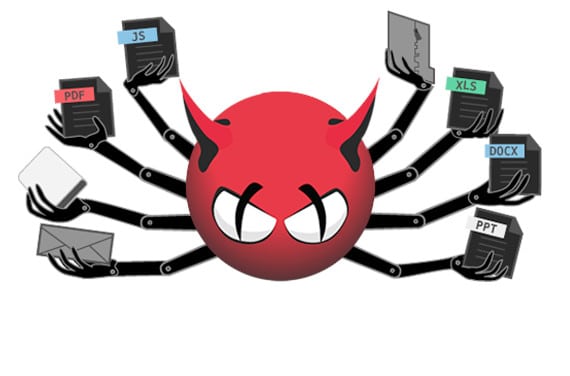clamscan: scan files and directories for viruses
Download ClamAV for OS X for free. A Macintosh OS X anti-virus software that uses the ClamAV anti-virus library. The project's focus is on usability. ClamAV ® is the open source standard for mail gateway scanning software. High Performance ClamAV includes a multi-threaded scanner daemon, command line utilities for on demand file scanning and automatic signature updates. Similar Software for Mac. Install Sophos Anti-Virus Home Edition on Mac OSX; Install WireOver on Mac OSX; Install Pd on Mac OSX; Install CLion on Mac OSX; Install xctool on Mac OSX; Install tmpwatch on Mac OSX; Install timelimit on Mac OSX; Install udptunnel on Mac OSX; Install zpython on Mac OSX; Install unyaffs on Mac OSX.
Command to display clamscan manual in Linux: $ man 1 clamscan
NAME

clamscan - scan files and directories for viruses
SYNOPSIS
clamscan [options] [file/directory/-]
DESCRIPTION
clamscan is a command line anti-virus scanner.
OPTIONS
Most of the options are simple switches which enable or disable some features. Options marked with [=yes/no(*)] can be optionally followed by =yes/=no; if they get called without the boolean argument the scanner will assume 'yes'. The asterisk marks the default internal setting for a given option.
--leave-tempsDo not remove temporary files.-d FILE/DIR, --database=FILE/DIRLoad virus database from FILE or load all virus database files from DIR.--official-db-only=[yes/no(*)]Only load the official signatures published by the ClamAV project.-l FILE, --log=FILESave scan report to FILE.-r, --recursiveScan directories recursively. All the subdirectories in the given directory will be scanned.-z, --allmatchAfter a match, continue scanning within the file for additional matches.--cross-fs=[yes(*)/no]Scan files and directories on other filesystems.--follow-dir-symlinks=[0/1(*)/2]Follow directory symlinks. There are 3 options: 0 - never follow directory symlinks, 1 (default) - only follow directory symlinks, which are passed as direct arguments to clamscan. 2 - always follow directory symlinks.--follow-file-symlinks=[0/1(*)/2]Follow file symlinks. There are 3 options: 0 - never follow file symlinks, 1 (default) - only follow file symlinks, which are passed as direct arguments to clamscan. 2 - always follow file symlinks.-f FILE, --file-list=FILEScan files listed line by line in FILE.--remove[=yes/no(*)]Remove infected files. Be careful!--move=DIRECTORYMove infected files into DIRECTORY. Directory must be writable for the ' user or unprivileged user running clamscan.--copy=DIRECTORYCopy infected files into DIRECTORY. Directory must be writable for the ' user or unprivileged user running clamscan.--exclude=REGEX, --exclude-dir=REGEXDon't scan file/directory names matching regular expression. These options can be used multiple times.--include=REGEX, --include-dir=REGEXOnly scan file/directory matching regular expression. These options can be used multiple times.--bytecode[=yes(*)/no]With this option enabled ClamAV will load bytecode from the database. It is highly recommended you keep this option turned on, otherwise you may miss detections for many new viruses.--bytecode-unsigned[=yes/no(*)]Allow loading bytecode from outside digitally signed .c[lv]d files.--bytecode-timeout=NSet bytecode timeout in milliseconds (default: 60000 = 60s)--statistics[=none(*)/bytecode/pcre]Collect and print execution statistics.--detect-pua[=yes/no(*)]Detect Possibly Unwanted Applications.--exclude-pua=CATEGORYExclude a specific PUA category. This option can be used multiple times. See http://www.clamav.net/doc/pua.html for the complete list of PUA--include-pua=CATEGORYOnly include a specific PUA category. This option can be used multiple times. See http://www.clamav.net/doc/pua.html for the complete list of PUA--detect-structured[=yes/no(*)]Use the DLP (Data Loss Prevention) module to detect SSN and Credit Card numbers inside documents/text files.--structured-ssn-format=XX=0: search for valid SSNs formatted as xxx-yy-zzzz (normal); X=1: search for valid SSNs formatted as xxxyyzzzz (stripped); X=2: search for both formats. Default is 0.--structured-ssn-count=#nThis option sets the lowest number of Social Security Numbers found in a file to generate a detect (default: 3).--structured-cc-count=#nThis option sets the lowest number of Credit Card numbers found in a file to generate a detect (default: 3).--scan-mail[=yes(*)/no]Scan mail files. If you turn off this option, the original files will still be scanned, but without parsing individual messages/attachments.--phishing-sigs[=yes(*)/no]Use the signature-based phishing detection.--phishing-scan-urls[=yes(*)/no]Use the url-based heuristic phishing detection (Phishing.Heuristics.Email.*)--heuristic-scan-precedence[=yes/no(*)]Allow heuristic match to take precedence. When enabled, if a heuristic scan (such as phishingScan) detects a possible virus/phish it will stop scan immediately. Recommended, saves CPU scan-time. When disabled, virus/phish detected by heuristic scans will be reported only at the end of a scan. If an archive contains both a heuristically detected virus/phish, and a real malware, the real malware will be reported Keep this disabled if you intend to handle '*.Heuristics.*' viruses differently from 'real' malware. If a non-heuristically-detected virus (signature-based) is found first, the scan is interrupted immediately, regardless of this config option.--phishing-ssl[=yes/no(*)]Block SSL mismatches in URLs (might lead to false positives!).--phishing-cloak[=yes/no(*)]Block cloaked URLs (might lead to some false positives).--partition-intersection[=yes/no(*)]Detect partition intersections in raw disk images using heuristics.--algorithmic-detection[=yes(*)/no]In some cases (eg. complex malware, exploits in graphic files, and others), ClamAV uses special algorithms to provide accurate detection. This option can be used to control the algorithmic detection.--scan-pe[=yes(*)/no]PE stands for Portable Executable - it's an executable file format used in all 32-bit versions of Windows operating systems. By default ClamAV performs deeper analysis of executable files and attempts to decompress popular executable packers such as UPX, Petite, and FSG. If you turn off this option, the original files will still be scanned but without additional processing.--scan-elf[=yes(*)/no]Executable and Linking Format is a standard format for UN*X executables. This option controls the ELF support. If you turn it off, the original files will still be scanned but without additional processing.--scan-ole2[=yes(*)/no]Scan Microsoft Office documents and .msi files. If you turn off this option, the original files will still be scanned but without additional processing.--scan-pdf[=yes(*)/no]Scan within PDF files. If you turn off this option, the original files will still be scanned, but without decoding and additional processing.--scan-swf[=yes(*)/no]Scan SWF files. If you turn off this option, the original files will still be scanned but without additional processing.--scan-html[=yes(*)/no]Detect, normalize/decrypt and scan HTML files and embedded scripts. If you turn off this option, the original files will still be scanned, but without additional processing.--scan-xmldocs[=yes(*)/no]Scan xml-based document files supported by libclamav. If you turn off this option, the original files will still be scanned, but without additional processing.--scan-hwp3[=yes(*)/no]Scan HWP3 files. If you turn off this option, the original files will still be scanned, but without additional processing.--scan-archive[=yes(*)/no]Scan archives supported by libclamav. If you turn off this option, the original files will still be scanned, but without unpacking and additional processing.--detect-broken[=yes/no(*)]Mark broken executables as viruses (Broken.Executable).--block-encrypted[=yes/no(*)]Mark encrypted archives as viruses (Encrypted.Zip, Encrypted.RAR).--block-macros[=yes/no(*)]Mark OLE2 files containing VBA macros as viruses (Heuristics.OLE2.ContainsMacros).--max-filesize=#nExtract and scan at most #n bytes from each archive. You may pass the value in kilobytes in format xK or xk, or megabytes in format xM or xm, where x is a number. This option protects your system against DoS attacks (default: 25 MB, max: <4 GB)--max-scansize=#nExtract and scan at most #n bytes from each archive. The size the archive plus the sum of the sizes of all files within archive count toward the scan size. For example, a 1M uncompressed archive containing a single 1M inner file counts as 2M toward max-scansize. You may pass the value in kilobytes in format xK or xk, or megabytes in format xM or xm, where x is a number. This option protects your system against DoS attacks (default: 100 MB, max: <4 GB)--max-files=#nExtract at most #n files from each scanned file (when this is an archive, a document or another kind of container). This option protects your system against DoS attacks (default: 10000)--max-recursion=#nSet archive recursion level limit. This option protects your system against DoS attacks (default: 16).--max-dir-recursion=#nMaximum depth directories are scanned at (default: 15).--max-embeddedpe=#nMaximum size file to check for embedded PE. You may pass the value in kilobytes in format xK or xk, or megabytes in format xM or xm, where x is a number (default: 10 MB, max: <4 GB).--max-htmlnormalize=#nMaximum size of HTML file to normalize. You may pass the value in kilobytes in format xK or xk, or megabytes in format xM or xm, where x is a number (default: 10 MB, max: <4 GB).--max-htmlnotags=#nMaximum size of normalized HTML file to scan. You may pass the value in kilobytes in format xK or xk, or megabytes in format xM or xm, where x is a number (default: 2 MB, max: <4 GB).--max-scriptnormalize=#nMaximum size of script file to normalize. You may pass the value in kilobytes in format xK or xk, or megabytes in format xM or xm, where x is a number (default: 5 MB, max: <4 GB).--max-ziptypercg=#nMaximum size zip to type reanalyze. You may pass the value in kilobytes in format xK or xk, or megabytes in format xM or xm, where x is a number (default: 1 MB, max: <4 GB).--max-partitions=#nThis option sets the maximum number of partitions of a raw disk image to be scanned. This must be a positive integer (default: 50).--max-iconspe=#nThis option sets the maximum number of icons within a PE to be scanned. This must be a positive integer (default: 100).--max-rechwp3=#nThis option sets the maximum recursive calls to HWP3 parsing function (default: 16).--pcre-match-limit=#nMaximum calls to the PCRE match function (default: 10000).--pcre-recmatch-limit=#nMaximum recursive calls to the PCRE match function (default: 5000).--pcre-max-filesize=#nMaximum size file to perform PCRE subsig matching (default: 25 MB, max: <4 GB).--enable-statsThis option enables submission of statistical data. (Default: stats submissions disabled)--stats-host-idThis option sets the HostID, in the form of an UUID, to use when submitting statistical information.--disable-pe-statsThis option disables the submission of PE section data. (Default: submitting of PE section data enabled if stats submissions as a whole is enabled).--stats-timeout=#nThis option sets the timeout in seconds to wait for communication back from the stats server. (Default: 10).--disable-cacheDisable caching and cache checks for hash sums of scanned files.EXAMPLES
(0) Scan a single file:clamscan file
(1) Scan a current working directory:clamscan
(2) Scan all files (and subdirectories) in /home:

clamscan -r /home
(3) Load database from a file:clamscan -d /tmp/newclamdb -r /tmp
 (4) Scan a data stream:
(4) Scan a data stream:cat testfile | clamscan -
(5) Scan a mail spool directory:clamscan -r /var/spool/mail
RETURN CODES
0 : No virus found. Fallout 4 ww2 mods xbox one.
- clamsubmit (1) - File submission utility for ClamAV
- clambc (1) - Bytecode Analysis and Testing Tool
- clamconf (1) - Clam AntiVirus configuration utility
- clamdscan (1) - scan files and directories for viruses using Clam AntiVirus Daemon
- clamdtop (1) - monitor the Clam AntiVirus Daemon
- clang-9 (1) - the Clang C, C++, and Objective-C compiler
- clang-10 (1) - the Clang C, C++, and Objective-C compiler
Linux man pages generated by: SysTutorials. Linux Man Pages Copyright Respective Owners. Site Copyright © SysTutorials. All Rights Reserved.
steadadelica
Clamav No Mac Download
- Joined
- Jan 17, 2007
- Messages
- 12
- Reaction score
- 0
- Points
- 1
- Location
- Norwich England
- Your Mac's Specs
- G4 sawtooth sonnet encore st 1.8GHz, 1.5GB Ram + MacBook 2.4GHz, 4GB runing OS 10.5.6
Clamav Download For Windows 10
I suppose the question is if it a macro virus?
I'm currently working in Malawi, Africa - I am the only mac user in an office (strangely makes me want a PC for the first time in years! must be the heat), but with so many PC viruses its pain full to watch them all (actually I'm glad i have a mac). none of these effect my machine although it can harbour them. however, i am using Office for Mac 2004 and have been sharing data with collogues. after one particular occasion i started up excel and the tool bars had disappeared and what's more i started to get an error message saying 'no more fonts can be used in this workbook' or something to that effect and the Excel GUI graphics started to disappear, although the window remains and none of the other applications are effected; in short every thing apart from excel is ok? when oppened i am asked if i would like to disable macros - but i haven't placed any in the workbook, so i'm presuming its a macro virus?
ClamAV cant detect it and i don't know how many of my workbooks are infected?
is there any thing i can do to search out which are infected and possibly clean them, or is the data lost, or is it something else entirely?
thanks



